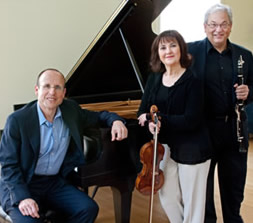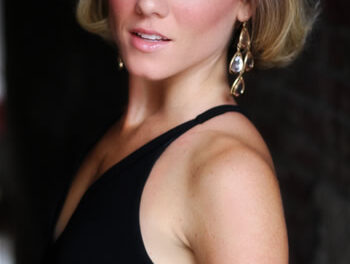For the third program of its 75th anniversary Split Scenes season, the American Dance Festival is presenting the choreography of two influential experimentalists in Duke University’s Page Auditorium. Two works of breath-catching beauty and strangeness by the late Alwin Nikolais are performed by the Ririe-Woodbury Dance Company, part of whose mission is to maintain Nikolais’ work in active repertory and to teach the technique and aesthetic developed by him and his collaborator, Murray Louis. These two pieces bookend a threesome by Trisha Brown performed by her company.
Brown’s two slight pieces in the program’s first half serve as an introduction to her concerns. Her style is repetitive and accretive: movement builds on movement, as is clearly seen in Accumulation, which premiered in 1971 and is set to The Grateful Dead’s “Uncle John’s Band.” Although this solo gets at some aspects of the music, especially its tidal pull, it doesn’t get at the spirit of the song very well. The choreography is pallid and scented with a whiff of mockery.
Gravity, weight, and load-bearing, with fluidity and momentum as countervailing forces, are also concerns for Brown. We feel the downward pull on the dancers’ bodies even when they reach or jump, and a small thrill of free power when the dance wittily harnesses physics to propel or turn them with an effortless ease. Spanish Dance, from 1973, introduces these concepts. Five women stand spaced across the stage, in front of the curtain. The one on the right raises her arms in a taut gesture, like a Spanish dancer’s, but then the arms are just up there, upright but hanging heavily. She shuffles forward until she bumps into the next dancer, who does precisely the same thing. Soon there is a little train moving across the stage, building momentum until it crashes into the proscenium arch. This all happens to the sound of Bob Dylan singing Gordon Lightfoot’s “Early Morning Rain,” his voice re-twisting the melancholy and maudlin strands of that song into a kind of razor wire. The relation of the dance to the music struck me as a little condescending, but perhaps there is some irony I’m missing.
The larger scope of Brown’s 2003 piece Present Tense resulted in a far more satisfying work. The choreographer has become increasingly involved with opera over the years, and this work has a large-scale operatic feel, even though it is set to selections from John Cage’s Sonatas and Interludes for Prepared Piano (1946-48). There’s a dramatic backdrop by painter Elizabeth Murray, with coordinating orange and yellows costumes by her, and superb lighting by Jennifer Tipton. Here there is room for Brown’s building impulse to become architectonic. The dance is full of wonderful images of spanning, of bridging, of bracing and buttressing, of building up and cantilevering out. Angular forms are achieved with fluid motion and without superfluous gesture. It was like an exhilarating bright new city was being built, rising chimerically from the stage again and again, with the plinking and plunking of Cage’s piano for accompaniment, rather than the random cacophony of back-up beepers.
The opening and closing works by Alwin Nikolais provide the real thrills of the evening, however. Not only did Nikolais, who had a profound impact on dance theater, want to produce total works of art for the stage, but he also designed every aspect of them, so that all elements have equal weight. (Interestingly, Nikolais was developing his aesthetic at the same time Jackson Pollock was making his all-over action paintings.) For both Crucible and Tensile Involvement, Nikolais was the choreographer and the sound designer and the lighting designer. It might be more accurate to say he painted with projected light, moving his dancers through an ever-shifting environment of color and pattern percolating with electronic sounds. Crucible (which premiered at the ADF on June 13, 1985) is as gorgeous and bizarre as a morphine dream, and is a technical and imaginative feat. I don’t want to spoil it for those who’ve never seen it — but if you’ve never seen it, go! Fans of Pilobolus will be particularly excited by it and by the closing dance, Tensile Involvement, in which the dancers weave their own net with suspended silks, resulting in a precise all-over patterning that makes Sol Lewitt’s string drawing sculptures look infantile. The lighting shimmers like the aurora borealis, and the final image may make you think of a field of snow angels — almost unbearably lovely on a hot night filled with the smoke of distant forest fires.
The program continues June 13 and 14 at 8 p.m.. See our calendar for details.












